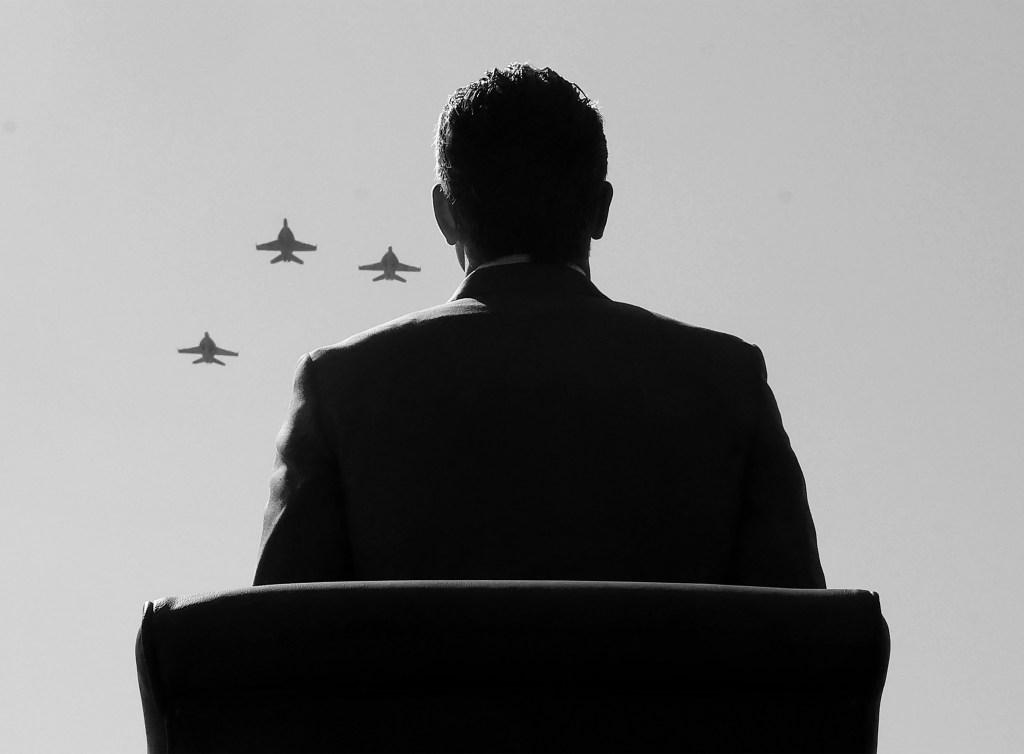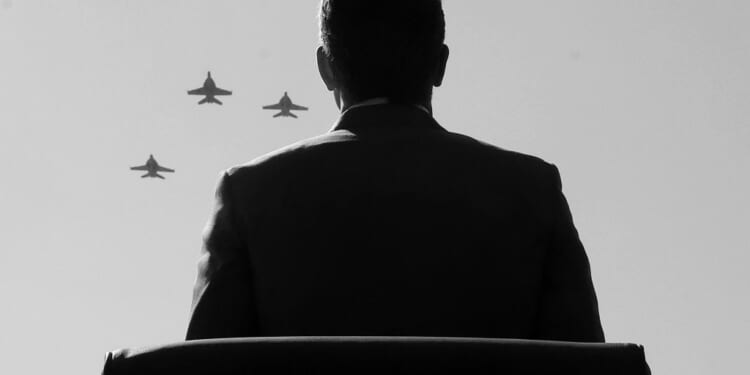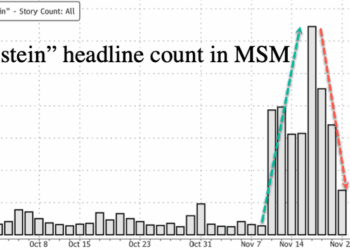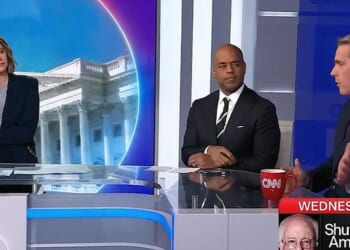
The latest YouGov poll shows that the Trump administration’s effort to rechristen the Department of Defense as the “Department of War” hasn’t taken hold with nearly three-quarters of Americans. But the rebranding, which was on display at an unprecedented gathering of all of the United States’ general officers in Quantico last month, isn’t just unpopular—it’s ahistorical. One might have expected the high-profile meeting to include speeches invoking the United States’ military traditions and reinforcing the remarkably successful American civil-military relationship. Throughout his short tenure, however, Secretary of Defense Pete Hegseth has attempted to consign both the American way of war and the American civil-military tradition to the trash.
Hegseth used the military gathering in Quantico to welcome the United States’ general officers to the “War Department,” declaring “the era of the Department of Defense is over.” This is, it must be noted, wrong on its face: Congress, not the executive, determines the names of departments, and the National Security Act of 1947 (as amended in 1949), which set the name “Department of Defense,” has not been repealed. Nevertheless, Hegseth’s speech outlined priorities of the War Department he believes he now leads, rather than the Defense Department he actually leads.
Secretary Hegseth’s vision for the department, a summation of his policy objectives over the last several months, is one of a military of “warriors,” with an emphasis on personal appearance, physical fitness, and rigorous training. He announced new physical training requirements for “every warrior,” as well as renewed guidelines on personal grooming, beards, long hair, and “superficial individual expression.” Hegseth also pledged to change what he characterized as “overly broad” definitions of hazing and harassment, and to free drill sergeants to “put their hands on recruits,” a practice that hasn’t been tolerated in decades. Other militaries that have encouraged such customs have historically created less effective forces, far more prone to commit atrocities and war crimes against civilians. But the speech revealed Secretary Hegseth is at best indifferent to, if not supportive of, war crimes.
This is an unusual set of priorities for a secretary of defense: Setting personal fitness and grooming standards are, after all, generally the preserve of senior enlisted non-commissioned officers, whose role in the armed forces is vital but very different from that of senior commissioned officers, much less the head of the Pentagon. Someone in Hegseth’s position ought to be concerned with questions of big-picture strategy, production, and procurement, considering carefully matters like the procurement woes surrounding the new Constellation-class frigate, force posture in Europe and East Asia, meeting the goal of producing 1.2 million 155mm shells per year, and the security commitment the United States is willing to make, in an era of rising peer competition, in regions like the Middle East. Instead, the secretary gathered together all of America’s admirals and generals to lecture them about beards and push-ups.
Equally striking, from a historical perspective, is how Hegseth’s vision represents a stark break from successful American military traditions. Secretary Hegseth clearly imagines that combat effectiveness arises from having the most physically fit, brutally trained, and impeccably coiffured “warriors,” whose personal abilities with arms set them apart as a distinct social class uniquely able to wield violence, who don’t “belong always in polite society.” But this has never been the American way of war, which has instead consistently emphasized superiority in logistics, technology, and production as the path to victory. Of course, training and fitness matter, yet the American way has always been to conclude that proper supplies, munitions, and effective weapons mattered more.
The United States Navy did not win its early duels with the Royal Navy in 1812 because it had the more experienced, battle-hardened sailors, but because it had newer frigates with more advanced designs and greater firepower for their size. The United States did not defeat the Confederacy through a superior fitness regimen, but through the logistical and production superiority necessary to maintain larger armies with more modern weapons on multiple fronts while also manning a crippling blockade of the Confederate coast. Allied success in World War II was not a product of fresh American soldiers being better fighters than battle-hardened Germans or Japanese, but of the United States’ “genius for mass-production,” mastery of logistics even through the submarine-infested Atlantic, and a remarkable talent for holding together fraught alliances. Secretary Hegseth would willingly abandon this legacy of victory in favor of the tradition held by America’s defeated enemies, who put their trust in their supposedly superior soldiers.
And whereas Hegseth decried as an “insane fallacy” the idea that “our diversity is our strength,” the American way of war has instead been one of victory won through diversity. In the American Civil War, United States armies composed of substantial numbers of African Americans and recent immigrants triumphed over the white armies of the Confederacy. In World War II, the most decorated combat unit ever to serve in the American military was the 442nd Regimental Combat Team, composed almost entirely of second-generation Japanese Americans, many recruited out of the internment camps. At sea in the same war, the United States’ superior adaptability owes some credit to the diverse experiences of “90-day wonders,” educated civilians recruited and rapidly trained as junior officers, whose wide range of civilian perspectives brought an intellectual agility not always present in the professional, Annapolis-trained officer corps.
Nor has the United States ever relied on “warriors,” despite the Trump administration’s “warrior ethos” posturing. Instead, the United States has always relied upon soldiers. The distinction may seem academic, but it is a vital one, reproduced in many languages: Warriors, defined by their personal skill and fitness, are a class apart and frequently, by the force of their arms, a ruling class above. Soldiers, by contrast, are drawn from a society to serve it under arms for a time, often bringing their civilian skills and experiences, before they return to civilian life. Hegseth invokes warrior armies of centuries past, many of which had good PR but poor battlefield performance, but modern warfare calls for soldiers whose combat tasks are frequently technical and intellectual, rather than physical.
All of that, of course, was perfectly well understood by the men who proposed and passed the 1947 law that created the position of secretary of defense, which Hegseth now holds but deigns not to name. The law’s author and chief sponsor, John Chandler “Chan” Gurney, served as a sergeant on the Western Front during World War II before serving in the Senate through the entirety of World War II. The bill was signed into law by World War I veteran Harry S. Truman, who requested, in the 1949 amendment to the law, the name “Department of Defense.” The first secretary of defense was James Forrestal, who served first as undersecretary and then secretary of the Navy during World War II, helping to guide the Navy and Marine Corps through the Battle of the Atlantic and the grueling island-hopping campaign in the Pacific. These were the men who, in full view of the horrors of two world wars, wholly possessed of the awful responsibility of confronting a nuclear-armed Soviet Union in the coming Cold War, established the Department of Defense and began the process of integrating its ranks. Woke snowflakes, they were not; all of them had experienced more of war and leadership than the current secretary.
Yet there was a darker second act to Secretary Hegseth’s Quantico gathering that broke even more profoundly with American martial traditions: the speech by President Donald Trump. The president, standing before the serried ranks of America’s general officers, called for a “war from within” against cities “run by radical left Democrats,” an open call to use military force against people and places that do not support him politically. The American civil-military relationship has been premised on a sort of bargain, visible as early as George Washington’s handling of the Newburgh Conspiracy in 1783: In exchange for the military staying entirely out of civilian politics, civilian authorities agree not to attempt to use the military in those same internal politics, placing the military in an elevated place of trust in society. That tradition has been extraordinarily successful—Americans broadly take for granted that our soldiers will not use their rifles in place of our votes. Yet as The Dispatch’s Nick Catoggio observed, Trump is openly urging the military brass to terminate that bargain and turn the military into a tool of his partisan political power.
There is a point at which Hegseth and Trump’s speeches converge: Hegseth’s speech, in many ways, announced his intent to produce the kind of military likely to assist Trump in disassembling the American civil-military tradition. This is the other danger that warriors represent: As a class apart, they pose a danger to a free society in which citizen-soldiers are a strength. Hegseth’s ideal army is one quite a bit more like those of Russia or Belarus: focused on the pageantry of physical fitness, prone to atrocity, and ultimately the tool of one man’s power rather than the shield of a free country.
At the outset of his speech, Trump acknowledged that it is part of the long tradition of American civil-military relations for officers not to applaud or otherwise show political favoritism during a political speech, like the one he was clearly about to give. He then invited them to break that tradition, before threatening their careers: “If you don’t like what I’m saying, you can leave the room, of course, there goes your rank, there goes your future.” If there is a silver lining to this very dark cloud, it is that the officers present laughed grimly at Trump’s threat and declined his invitation to break that long, honorable American tradition: They did not applaud.

















